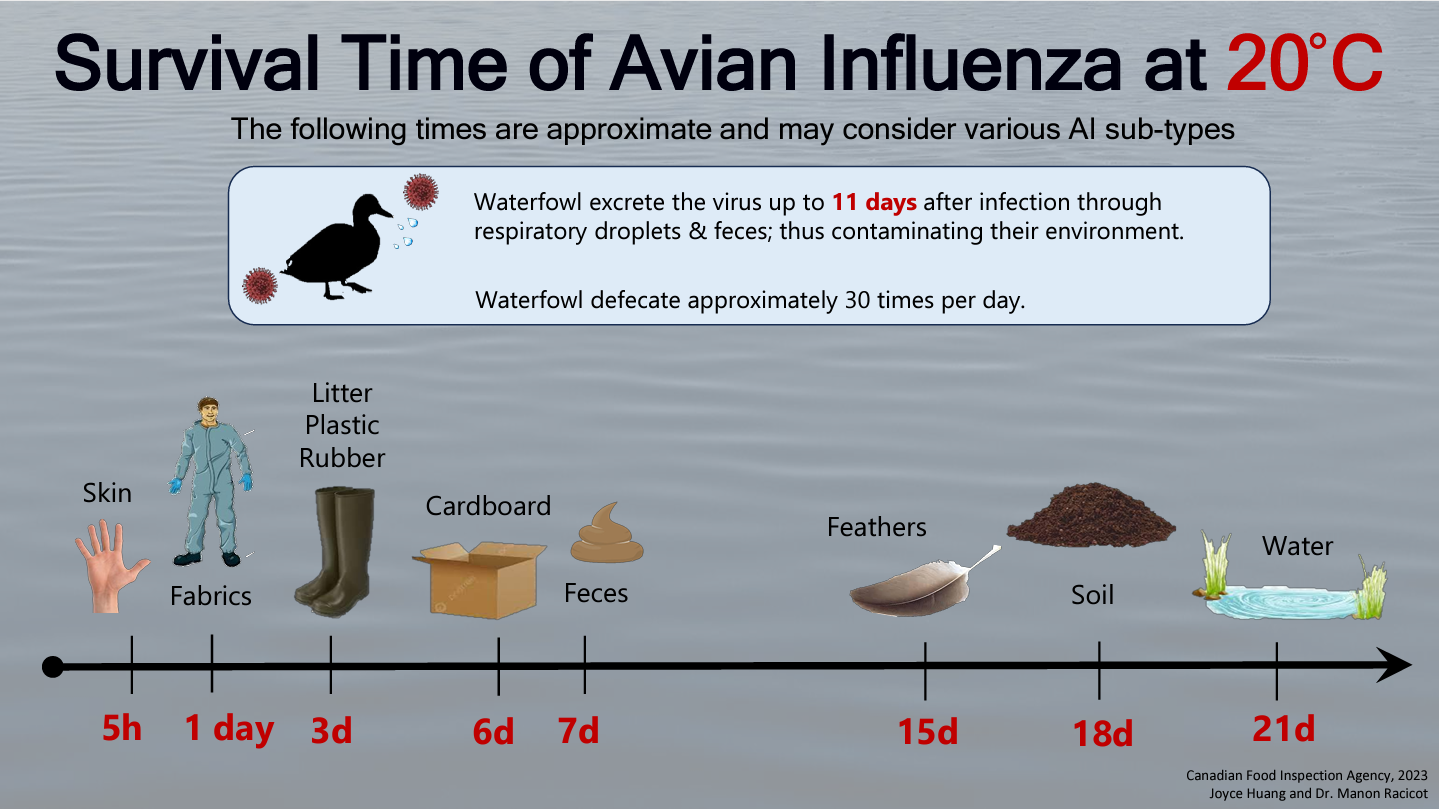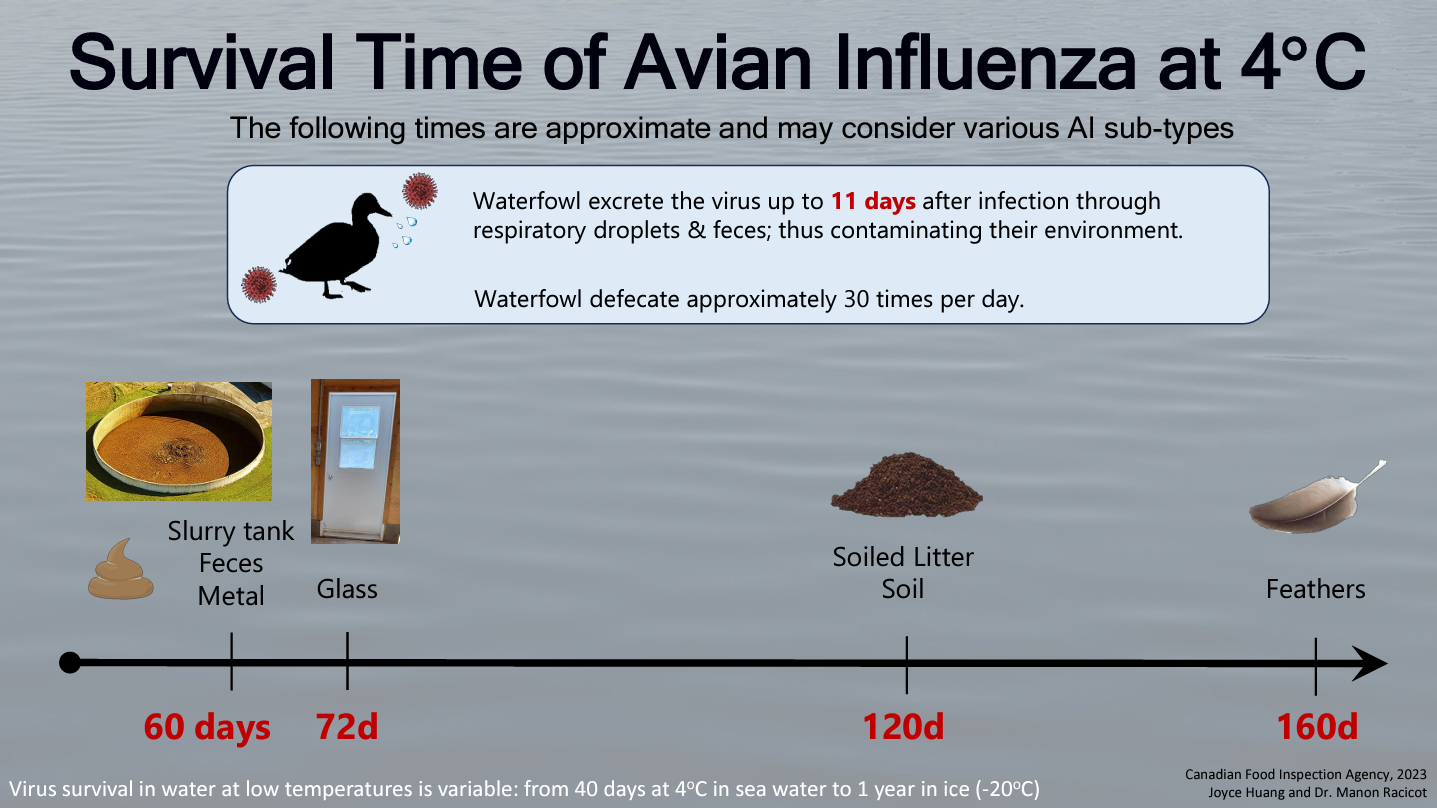


 Français
Français


Avian influenza continues to be detected in wild birds throughout Canada, and thus the concern for our domestic flocks also continues.
While the migratory season is the highest risk level, the avian influenza virus can still survive for lengthy periods of time in different environments and on different types of material.

The Canadian Food Inspection Agency (CFIA) has published new infographics to illustrate how long the virus can survive in various conditions.
These timelines show how persistent the virus can be in different situations. Waterfowl defecate approximately 30 times a day and can still excrete the virus up to 11 days after infection, meaning that their surrounding environment can be significantly contaminated with avian influenza virus.
Given the fact that the virus can survive for 21 days in water at 20oC or on feathers for 160 days at 4oC, there is an increased risk of contamination of the environment even long after the waterfowl have left the area.
These timelines also underscore the importance of proper boot changes at the barn entry to reduce the risk of bringing the virus into the barn, as the virus can survive on rubber for 3 days.


